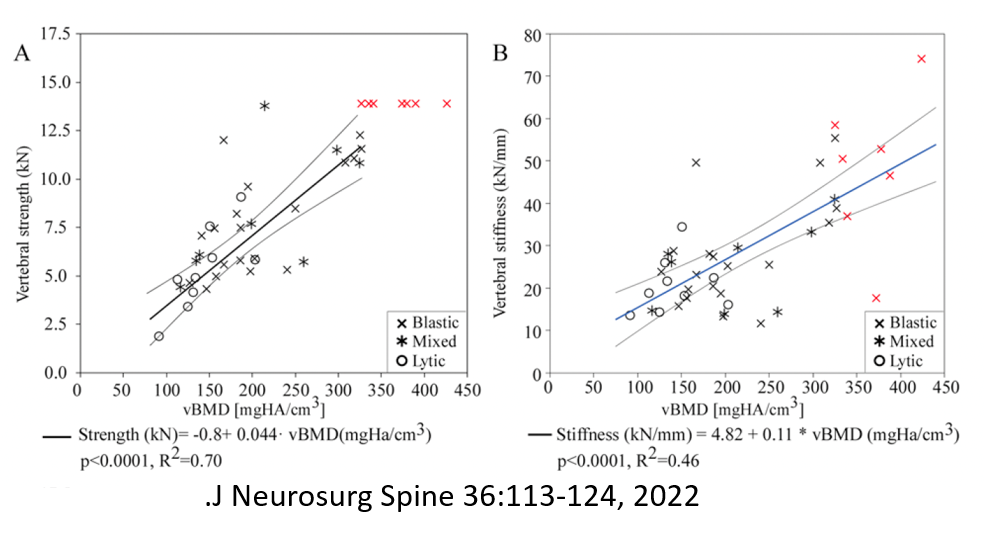Vertebral fractures are a risk associated with bone metastases in a large range of cancers, with potentially debilitating consequences. While therapeutic interventions exist to reinforce the bone to prevent such fractures, it is currently difficult to evaluate a given patient for level of fracture risk, and optimal intervention strategy (e.g. surgical approach, area of bone for intervention).
We have been applying engineering principles to the analysis of bone mechanical properties to obtain quantitative data with which to provide reliable and appropriate risk assessment for vertebral fractures in the setting of bone metastases.
In our most recent study, we evaluated cadaver vertebrae from donors with metastatic spinal disease through CT studies and mechanical testing.

We evaluated the current methodology for risk assessment, which is a subjective clinical classification of bone type from CT scans. We showed that this classification scheme did not correlate with bone strength measures.

CT scans were used to calculate volumetric bone mineral density (vBMD) from the bone samples and compared with measured compressive strength and stiffness. vMBD was a much better predictor of bone strength and stiffness than subjective bone classification.
This new paradigm of computed CT-derived vBMD to offer improved estimates of the mechanical properties of bone, and hence the risk of vertebral fractures, may enable better treatment planning to prevent these fractures while minimizing the risk of unnecessary procedures for those individuals at low risk for fracture.
